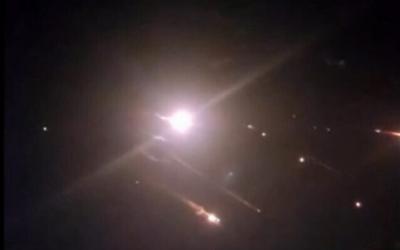Share
Human Rights Voices
While the UN devotes its human rights operations to the demonization of the democratic state of Israel above all others and condemns the United States more often than the vast majority of non-democracies around the world, the voices of real victims around the world must be heard.
Iran, April 14, 2024
Young Arab-Israeli girl seriously hurt in Iran attack remains in life-threatening condition
Original source
A 7-year-old girl, the only person in Israel who sustained significant injuries in the unprecedented attack by Iran overnight Saturday-Sunday, remained in life-threatening condition the following day at Soroka Medical Center in Beersheba.
According to an update from the hospital, the unnamed girl underwent surgery for a serious head wound and is now in the pediatric intensive care unit.
The girl was injured when shrapnel from an intercepted ballistic missile fell directly on her family’s home in a Bedouin town near Arad in the southern Negev region.
“It fell on us into the house at around 2 in the morning. She was sleeping in the house and we immediately took her to Soroka hospital,” the girl’s father Mohammed said.
The Magen David Adom emergency response services reported that it met up with a car carrying the child, transferred her to an ambulance, and began treating her on the way to the hospital.
Soroka said eight other people had been brought in with minor injuries, some of whom, like the girl, had been hit by shrapnel. Others were hurt while running to protected areas, and three suffered from acute anxiety.
The hospital did not provide further detail but confirmed that some of the eight people were hurt in the same incident in which the young girl was severely injured.
Magen David Adom said that its emergency medical technicians and paramedics had been dispatched during the attack to various locations across the country and had cared for 31 casualties in good condition, all of whom were suffering from anxiety symptoms or injuries caused while seeking shelter.
According to Israel Defense Forces spokesman Rear Adm. Daniel Hagari, air defenses intercepted 99 percent of the 170 drones, 30 cruise missiles, and 120 ballistic missiles launched at Israel.
The Negev’s unrecognized Bedouin villages largely lack rocket shelters. When shelters do exist, they are concrete structures donated and erected by philanthropic, volunteer, and civil society organizations.
Since Israel’s establishment in 1948, authorities have sought to relocate its largely pastoralist Bedouin citizens to seven recognized towns in an attempt to urbanize them. But many Bedouin insist on their right to remain where they are, and around 120,000 – out of an overall Bedouin population in the Negev of 300,000 – live in dozens of unrecognized villages scattered across the desert region.
Although the name and exact location of the severely injured girl’s community were not given, it appears that it was an unrecognized village.
Since the beginning of the war, activists have committed to providing 200 rocket shelters, but the overall shortage is estimated to stand at 11,000.

